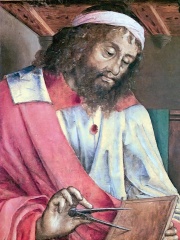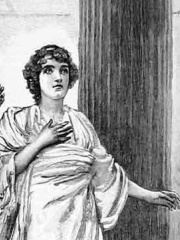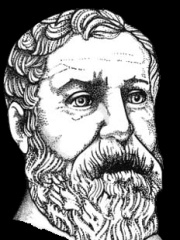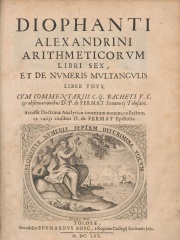







The Most Famous
MATHEMATICIANS from Egypt
This page contains a list of the greatest Egyptian Mathematicians. The pantheon dataset contains 1,004 Mathematicians, 12 of which were born in Egypt. This makes Egypt the birth place of the 17th most number of Mathematicians behind Netherlands, and Belgium.
Top 10
The following people are considered by Pantheon to be the top 10 most legendary Egyptian Mathematicians of all time. This list of famous Egyptian Mathematicians is sorted by HPI (Historical Popularity Index), a metric that aggregates information on a biography's online popularity. Visit the rankings page to view the entire list of Egyptian Mathematicians.

1. Euclid (350 BC - 240 BC)
With an HPI of 90.02, Euclid is the most famous Egyptian Mathematician. His biography has been translated into 166 different languages on wikipedia.
Euclid (; Ancient Greek: Εὐκλείδης; fl. 300 BC) was an ancient Greek mathematician active as a geometer and logician. Considered the "father of geometry", he is chiefly known for the Elements treatise, which established the foundations of geometry that largely dominated the field until the early 19th century. His system, now referred to as Euclidean geometry, involved innovations in combination with a synthesis of theories from earlier Greek mathematicians, including Eudoxus of Cnidus, Hippocrates of Chios, Thales and Theaetetus. With Archimedes and Apollonius of Perga, Euclid is generally considered among the greatest mathematicians of antiquity, and one of the most influential in the history of mathematics. Very little is known of Euclid's life, and most information comes from the scholars Proclus and Pappus of Alexandria many centuries later. Medieval Islamic mathematicians invented a fanciful biography, and medieval Byzantine and early Renaissance scholars mistook him for the earlier philosopher Euclid of Megara. It is now generally accepted that he spent his career in Alexandria and lived around 300 BC, after Plato's students and before Archimedes. There is some speculation that Euclid studied at the Platonic Academy and later taught at the Musaeum; he is regarded as bridging the earlier Platonic tradition in Athens with the later tradition of Alexandria. In the Elements, Euclid deduced the theorems from a small set of axioms. He also wrote works on perspective, conic sections, spherical geometry, number theory, and mathematical rigour. In addition to the Elements, Euclid wrote a central early text in the optics field, Optics, and lesser-known works including Data and Phaenomena. Euclid's authorship of On Divisions of Figures and Catoptrics has been questioned. He is thought to have written many lost works.

2. Hypatia (350 - 415)
With an HPI of 84.85, Hypatia is the 2nd most famous Egyptian Mathematician. Her biography has been translated into 96 different languages.
Hypatia (born c. 350–370 – March 415 AD) was a Neoplatonist philosopher, astronomer, and mathematician who lived in Alexandria, at that time in the province of Egypt and a major city of the Eastern Roman Empire. In Alexandria, Hypatia was a prominent thinker who taught subjects including philosophy and astronomy, and in her lifetime was renowned as a great teacher and a wise counselor. Not the only fourth century Alexandrian female mathematician, Hypatia was preceded by Pandrosion. However, Hypatia is the first female mathematician whose life is reasonably well recorded. She wrote a commentary on Diophantus's thirteen-volume Arithmetica, which may survive in part, having been interpolated into Diophantus's original text, and another commentary on Apollonius of Perga's treatise on conic sections, which has not survived. Many modern scholars also believe that Hypatia may have edited the surviving text of Ptolemy's Almagest, based on the title of her father Theon's commentary on Book III of the Almagest. Hypatia constructed astrolabes and hydrometers, but did not invent either of these, which were both in use long before she was born. She was tolerant toward Christians and taught many Christian students, including Synesius, the future bishop of Ptolemais. Ancient sources record that Hypatia was widely beloved by pagans and Christians alike and that she established great influence with the political elite in Alexandria. Toward the end of her life, Hypatia advised Orestes, the Roman prefect of Alexandria, who was in the midst of a political feud with Cyril, the bishop of Alexandria. Rumors spread accusing her of preventing Orestes from reconciling with Cyril and, in March 415 AD, she was murdered by a mob of Christians led by a lector named Peter. Hypatia's murder shocked the empire and transformed her into a "martyr for philosophy", leading future Neoplatonists such as the historian Damascius (c. 458 – c. 538) to become increasingly fervent in their opposition to Christianity. During the Middle Ages, Hypatia was co-opted as a symbol of Christian virtue and scholars believe she was part of the basis for the legend of Saint Catherine of Alexandria. During the Age of Enlightenment, she became a symbol of opposition to Catholicism. In the nineteenth century, European literature, especially Charles Kingsley's 1853 novel Hypatia, romanticized her as "the last of the Hellenes". In the twentieth century, Hypatia became seen as an icon for women's rights and a precursor to the feminist movement. Since the late twentieth century, some portrayals have associated Hypatia's death with the destruction of the Library of Alexandria, despite the historical fact that the library no longer existed during Hypatia's lifetime.

3. Hero of Alexandria (10 - 75)
With an HPI of 80.07, Hero of Alexandria is the 3rd most famous Egyptian Mathematician. His biography has been translated into 71 different languages.
Hero of Alexandria (; Ancient Greek: Ἥρων ὁ Ἀλεξανδρεύς, Hērōn hò Alexandreús, also known as Heron of Alexandria ; probably 1st or 2nd century AD) was a Greek mathematician and engineer who was active in Alexandria in Egypt during the Roman era. He has been described as the greatest experimentalist of antiquity and a representative of the Hellenistic scientific tradition. Hero published a well-recognized description of a steam-powered device called an aeolipile, also known as "Hero's engine". Among his most famous inventions was a windwheel, constituting the earliest instance of wind harnessing on land. In his work Mechanics, he described pantographs. Some of his ideas were derived from the works of Ctesibius. In mathematics, he wrote a commentary on Euclid's Elements and a work on applied geometry known as the Metrica. He is mostly remembered for Heron's formula; a way to calculate the area of a triangle using only the lengths of its sides. Much of Hero's original writings and designs have been lost, but some of his works were preserved in manuscripts from the Byzantine Empire and, to a lesser extent, in Latin or Arabic translations.

4. Diophantus (201 - 300)
With an HPI of 79.85, Diophantus is the 4th most famous Egyptian Mathematician. His biography has been translated into 72 different languages.
Diophantus of Alexandria (Ancient Greek: Διόφαντος, romanized: Diophantos) (; fl. 250 CE) was a Greek mathematician who was the author of the Arithmetica in thirteen books, ten of which are still extant, made up of arithmetical problems that are solved through algebraic equations. Joseph-Louis Lagrange called Diophantus "the inventor of algebra"; his exposition became the standard within the Neoplatonic schools of Late antiquity, and its translation into Arabic in the 9th century AD and had influence in the development of later algebra: Diophantus' method of solution matches medieval Arabic algebra in its concepts and overall procedure. The 1621 edition of Arithmetica by Bachet gained fame after Pierre de Fermat wrote his famous "Last Theorem" in the margins of his copy. In modern use, Diophantine equations are algebraic equations with integer coefficients for which integer solutions are sought. Diophantine geometry and Diophantine approximations are two other subareas of number theory that are named after him. Some problems from the Arithmetica have inspired modern work in both abstract algebra and number theory.

5. Pappus of Alexandria (290 - 350)
With an HPI of 73.72, Pappus of Alexandria is the 5th most famous Egyptian Mathematician. His biography has been translated into 50 different languages.
Pappus of Alexandria ( ; Ancient Greek: Πάππος ὁ Ἀλεξανδρεύς; c. 290 – c. 350 AD) was a Greek mathematician of late antiquity known for his Synagoge (Συναγωγή) or Collection (c. 340), and for Pappus's hexagon theorem in projective geometry. Almost nothing is known about his life except for what can be found in his own writings, many of which are lost. Pappus apparently lived in Alexandria, where he worked as a mathematics teacher to higher level students, one of whom was named Hermodorus. The Collection, his best-known work, is a compendium of mathematics in eight volumes, the bulk of which survives. It covers a wide range of topics that were part of the ancient mathematics curriculum, including geometry, astronomy, and mechanics. Pappus was active in a period generally considered one of stagnation in mathematical studies, where, to some, he stands out as a remarkable exception and, to others, as an exemplar of ills that halted the progress of Greek science. In many respects, his fate strikingly resembles that of Diophantus', originally of limited importance but becoming very influential in the late Renaissance and Early Modern periods.

6. Ctesibius (284 BC - 221 BC)
With an HPI of 71.22, Ctesibius is the 6th most famous Egyptian Mathematician. His biography has been translated into 37 different languages.
Ctesibius or Ktesibios or Tesibius (Ancient Greek: Κτησίβιος; fl. 285–222 BCE) was an ethnically Greek inventor and mathematician in Alexandria, Ptolemaic Egypt. Very little is known of Ctesibius' life, but his inventions were well known in his lifetime. He was likely the first head of the Museum of Alexandria. He wrote the first treatises on the science of compressed air and its uses in pumps (and even in a kind of cannon). This, in combination with his work On pneumatics on the elasticity of air, earned him the title of "father of pneumatics." None of his written work has survived, including his Memorabilia, a compilation of his research that was cited by Athenaeus. Ctesibius' most commonly known invention today is a pipe organ (hydraulis), a predecessor of the modern church organ. He was married to a woman named Thais, who is not to be confused with Thaïs, the Greek hetaira who travelled with Alexander the Great on his military campaigns.

7. Theon of Alexandria (335 - 405)
With an HPI of 70.00, Theon of Alexandria is the 7th most famous Egyptian Mathematician. His biography has been translated into 31 different languages.
Theon of Alexandria (; Ancient Greek: Θέων ὁ Ἀλεξανδρεύς; c. AD 335 – c. 405) was a Greek scholar and mathematician who lived in Alexandria, Egypt. He edited and arranged Euclid's Elements and wrote commentaries on works by Euclid and Ptolemy. His daughter Hypatia also won fame as a mathematician.

8. Menelaus of Alexandria (70 - 140)
With an HPI of 68.57, Menelaus of Alexandria is the 8th most famous Egyptian Mathematician. His biography has been translated into 25 different languages.
Menelaus of Alexandria (; Ancient Greek: Μενέλαος ὁ Ἀλεξανδρεύς, Menelaos ho Alexandreus; c. 70 – 140 CE) was a Greek mathematician and astronomer, the first to recognize geodesics on a curved surface as natural analogs of straight lines.

9. Abū Kāmil Shujāʿ ibn Aslam (850 - 930)
With an HPI of 66.86, Abū Kāmil Shujāʿ ibn Aslam is the 9th most famous Egyptian Mathematician. His biography has been translated into 23 different languages.
Abū Kāmil Shujāʿ ibn Aslam ibn Muḥammad Ibn Shujāʿ (Latinized as Auoquamel, Arabic: أبو كامل شجاع بن أسلم بن محمد بن شجاع, also known as Al-ḥāsib al-miṣrī—lit. "The Egyptian Calculator") (c. 850 – c. 930) was a prominent Egyptian mathematician during the Islamic Golden Age. He is considered the first mathematician to systematically use and accept irrational numbers as solutions and coefficients to equations. His mathematical techniques were later adopted by Fibonacci, thus allowing Abu Kamil an important part in introducing algebra to Europe. Abu Kamil made important contributions to algebra and geometry. He was the first Islamic mathematician to work easily with algebraic equations with powers higher than x 2 {\displaystyle x^{2}} (up to x 8 {\displaystyle x^{8}} ), and solved sets of non-linear simultaneous equations with three unknown variables. He illustrated the rules of signs for expanding the multiplication ( a ± b ) ( c ± d ) {\displaystyle (a\pm b)(c\pm d)} . He wrote all problems rhetorically, and some of his books lacked any mathematical notation beside those of integers. For example, he uses the Arabic expression "māl māl shayʾ" ("square-square-thing") for x 5 {\displaystyle x^{5}} (as x 5 = x 2 ⋅ x 2 ⋅ x {\displaystyle x^{5}=x^{2}\cdot x^{2}\cdot x} ). One notable feature of his works was enumerating all the possible solutions to a given equation. The Muslim encyclopedist Ibn Khaldūn classified Abū Kāmil as the second greatest algebraist chronologically after al-Khwarizmi.

10. Ahmes (1680 BC - 1620 BC)
With an HPI of 66.35, Ahmes is the 10th most famous Egyptian Mathematician. His biography has been translated into 25 different languages.
Ahmes (Ancient Egyptian: jꜥḥ-ms “, a common Egyptian name also transliterated Ahmose) was an ancient Egyptian scribe who lived towards the end of the Fifteenth Dynasty (and of the Second Intermediate Period) and the beginning of the Eighteenth Dynasty (and of the New Kingdom). He transcribed the Rhind Mathematical Papyrus, a work of ancient Egyptian mathematics that dates to approximately 1550 BC; he is the earliest contributor to mathematics whose name is known. Ahmes claimed not to be the writer of the work but rather just the scribe. He claimed the material came from an even older document from around 2000 B.C.
People
Pantheon has 12 people classified as Egyptian mathematicians born between 1680 BC and 950. Of these 12, none of them are still alive today. The most famous deceased Egyptian mathematicians include Euclid, Hypatia, and Hero of Alexandria.
Deceased Egyptian Mathematicians
Go to all RankingsEuclid
350 BC - 240 BC
HPI: 90.02
Hypatia
350 - 415
HPI: 84.85
Hero of Alexandria
10 - 75
HPI: 80.07
Diophantus
201 - 300
HPI: 79.85
Pappus of Alexandria
290 - 350
HPI: 73.72
Ctesibius
284 BC - 221 BC
HPI: 71.22
Theon of Alexandria
335 - 405
HPI: 70.00
Menelaus of Alexandria
70 - 140
HPI: 68.57
Abū Kāmil Shujāʿ ibn Aslam
850 - 930
HPI: 66.86
Ahmes
1680 BC - 1620 BC
HPI: 66.35
Ibn Yunus
950 - 1009
HPI: 66.10
Hypsicles
190 BC - 120 BC
HPI: 60.26



